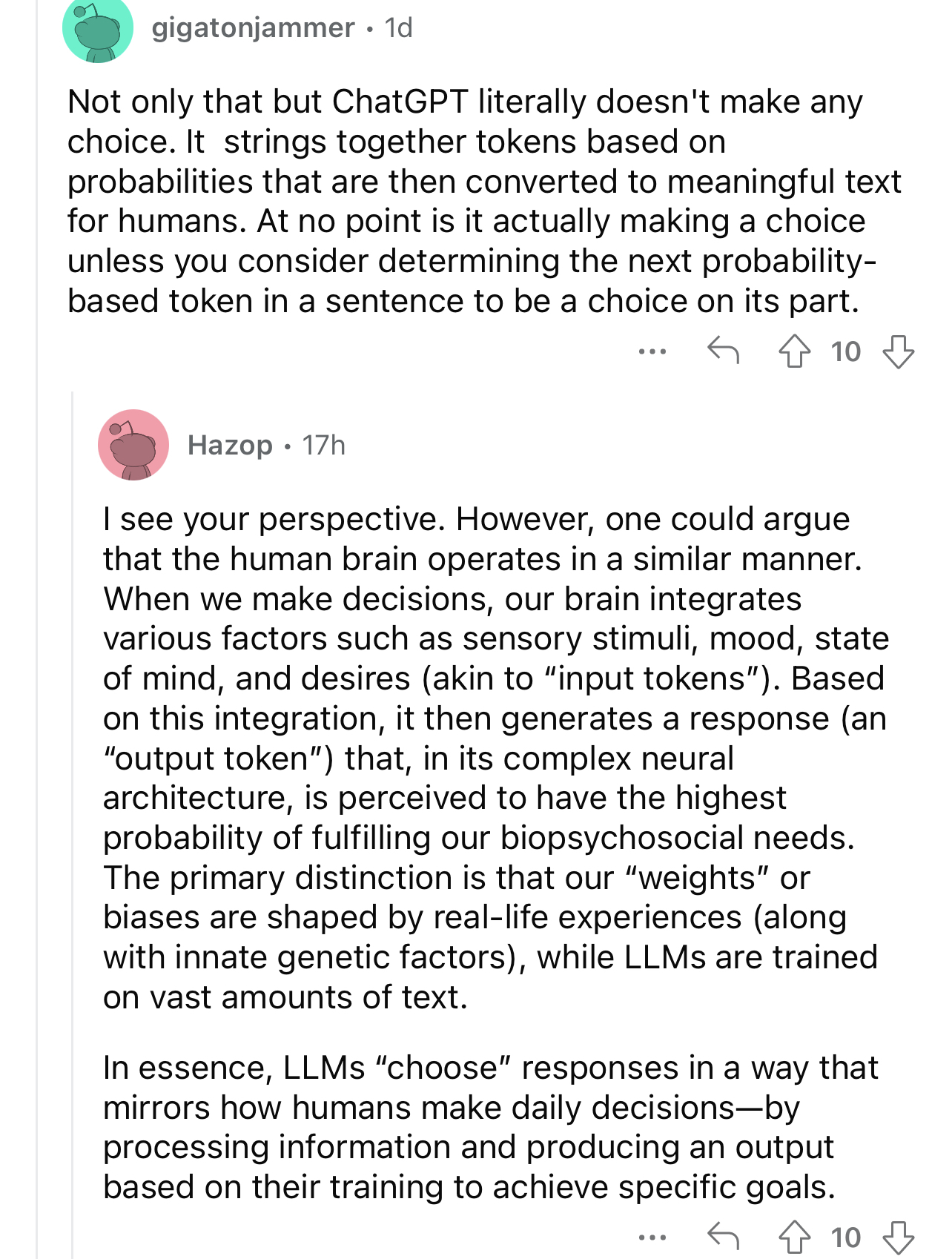the_dunk_tank
It's the dunk tank.
This is where you come to post big-brained hot takes by chuds, libs, or even fellow leftists, and tear them to itty-bitty pieces with precision dunkstrikes.
Rule 1: All posts must include links to the subject matter, and no identifying information should be redacted.
Rule 2: If your source is a reactionary website, please use archive.is instead of linking directly.
Rule 3: No sectarianism.
Rule 4: TERF/SWERFs Not Welcome
Rule 5: No ableism of any kind (that includes stuff like libt*rd)
Rule 6: Do not post fellow hexbears.
Rule 7: Do not individually target other instances' admins or moderators.
Rule 8: The subject of a post cannot be low hanging fruit, that is comments/posts made by a private person that have low amount of upvotes/likes/views. Comments/Posts made on other instances that are accessible from hexbear are an exception to this. Posts that do not meet this requirement can be posted to !shitreactionariessay@lemmygrad.ml
Rule 9: if you post ironic rage bait im going to make a personal visit to your house to make sure you never make this mistake again
view the rest of the comments


If you read the current literature on the science of consciousness, the reality is that the best we can do is use things like neuroscience and psychology to rule out a couple previously prominent theories of how consciousness probably works. Beyond that, we’re still very much in the philosophy stage. I imagine we’ll eventually look back on a lot of current metaphysics being written and it will sound about as crazy as “obesity is caused by inhaling the smell of food”, which was a belief of miasma theory before germ theory was discovered.
That said, speaking purely in terms of brain structures, the math the most LLMs do is not nearly complex enough to model a human brain. The fact that we can optimize an LLM for its ability to trick our pattern recognition into perceiving it as conscious does not mean the underlying structures are the same. Similar to how film will always be a series of discrete pictures that blur together into motion when played fast enough. Film is extremely good at tricking our sight into perceiving motion. That doesn’t mean I’m actually watching a physical Death Star explode every time A New Hope plays.
I suppose I already figured that we can't make a neural network equivalent to a human brain without a complete understanding of how our brains actually work. I also suppose there's no way to say anything certain about the nature of consciousness yet.
So I guess I should ask this follow up question: Is it possible in theory to build a neural network equivalent to the absolutely tiny brain and nervous system any given insect has? Not to the point of consciousness given that's probably unfalsifiable, also not just an AI trained to mimic an insect's behavior, but a 1:1 reconstruction of the 100,000 or so brain cells comprising the cognition of relatively small insects? And not with an LLM, but instead some kind of new model purpose built for this kind of task. I feel as though that might be an easier problem to say something conclusive about.
The biggest issue I can think of with that idea is the neurons in neural networks are only superficially similar to real, biological neurons. But that once again strikes me as a problem of complexity. Individual neurons are probably much easier to model somewhat accurately than an entire brain is, although still nowhere near our reach. If we manage to determine this is possible, then it would seemingly imply to me that someday in the future we could slowly work our way up the complexity gradient from insect cognition to mammalian cognition.
IIRC it's been tried and they utterly failed. part of the problem is that "the brain" isn't just the central nervous system -- a huge chunk of relevant nerves are spread through the whole body and contribute to the function of the whole body, but they're deeply specialized and how they actually work is not yet well studied. in humans, a huge percentage of our nerve cells are actually in our gut and another meaningful fraction spread through the rest of the body. basically, sensory input comes extremely preprocessed to the brain and some amount of memory isn't stored centrally. and that's all before we even talk about how little we know about how neurons actually work -- the last time I was reading about this (a decade or so ago) there was significant debate happening about whether real processing even happened in the neurons or whether it was all in the connective tissue, with the neurons basically acting like batteries. the CS model of a neuron is just woefully lacking any real basis in biology except by a poorly understood analogy.